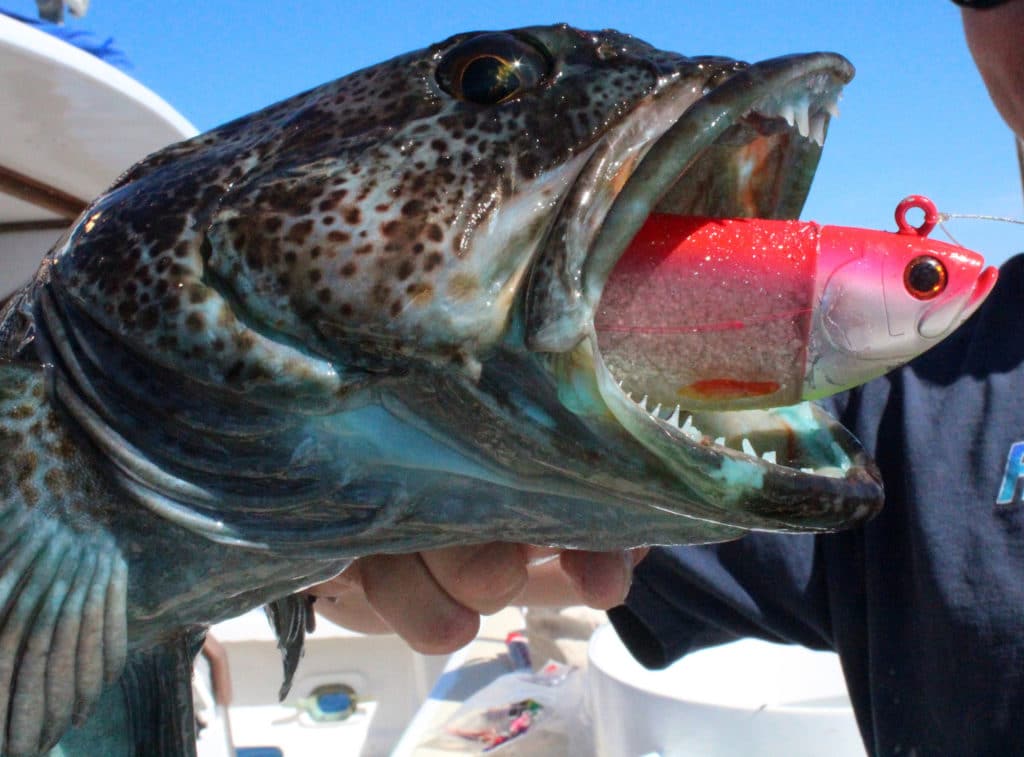
What does a lingcod eat? Anything it wants. These deep-water reef predators rule the bad neighborhoods where they live, feeding on octopus, sand dabs, rockfish and anything else they can fit in their cavernous, toothy maws. They readily attack prey seemingly too large to swallow, a reason they are often caught by anglers as “hitchhikers” literally lock-jawed onto hooked rockfish as they’re reeled toward the surface.
Savvy Southern California anglers know this and appeal to the lingcod’s ravenous appetite and aggressive nature by tossing super-size swimbaits. The technique has developed somewhat of a cult following: Small groups of swimbait aficionados gather in the bow of partyboats to “chuck the rubber,” while the majority of the passengers deploy dropper-loop rigs with 1-pound weights meant to carry live or cut baits into depths that can reach 300 feet or more.
The fall season—leading right up to the end-of-year Southern California groundfish closure in January and February—is probably the best time of the year to target big lingcod in this way. As temperatures cool, lings move into shallower waters and feed aggressively. Smart anglers venture out on skiffs and party boats to meet them, swim bait outfits in hand.
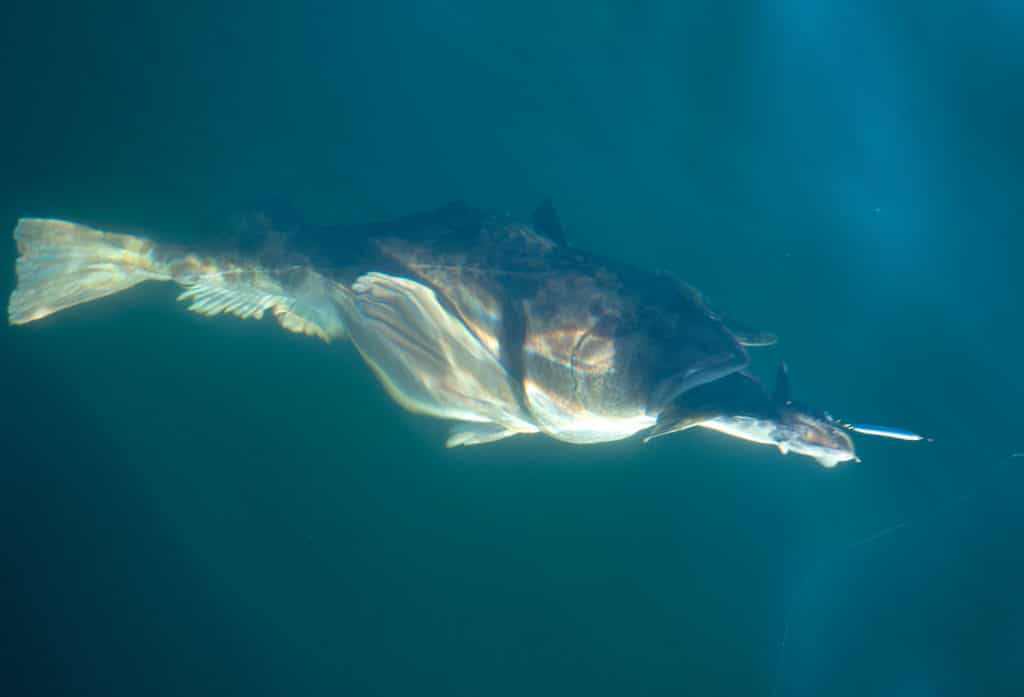
Make no mistake, plenty of anglers catch lingcod on live mackerel, live sardines or even whole or stripped squid fished on “shrimp fly” rigs. Large lings are sometimes taken this way in between reeling up vermillion, chucklehead or any of a wide variety of rockfish species.
But if you want to catch lingcod almost exclusively—and the largest ones on the boat—switch to big swimbaits. I say “almost exclusively,” because truly large rockfish of 5 pounds and up sometimes jump on these soft-plastic lures, as well, adding variety and quality to the equation.
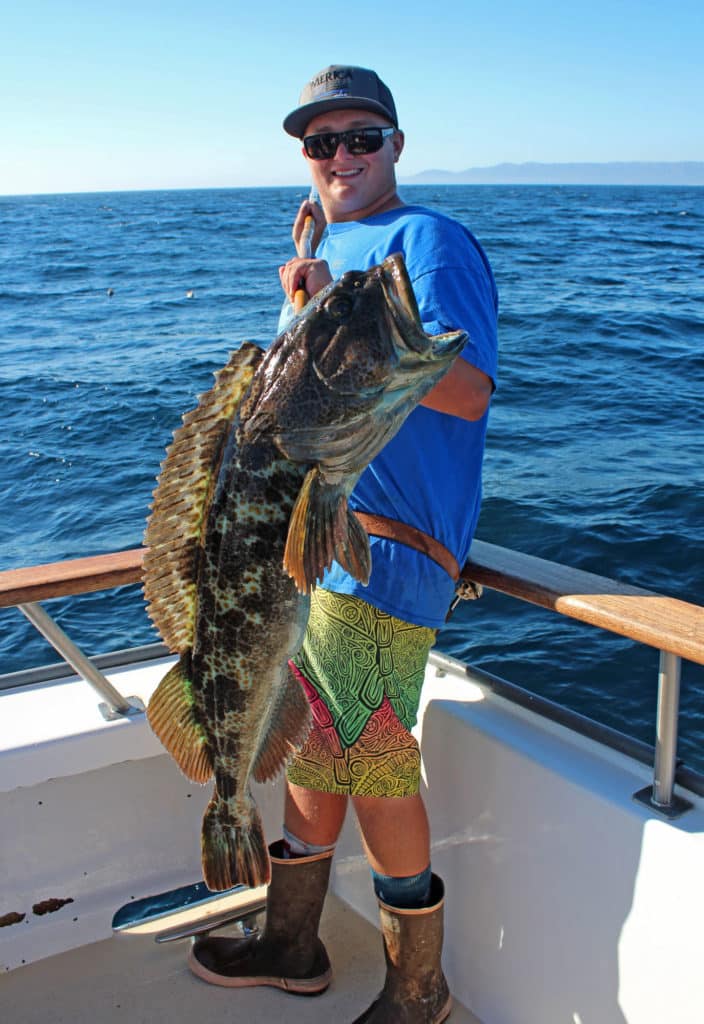
Feed ‘Em a Mouthful
What do I mean by a big swim bait? Lure companies like Kustom Kraft, Candy Bar and Savage Gear have developed specialized lures for this technique, with beefy, sturdy plastic bodies boasting large paddle tails for maximum action and vibration. Up to 10 inches long, these tails pair with heavy, wedge-shaped leadheads sporting 7/0 to 10/0 hooks. Depending on the depth of the structure being fished, leadheads can range from 4 to 16 ounces. Some lures, like those from Savage Gear, feature molded leadheads designed for use with specific integrated tails.
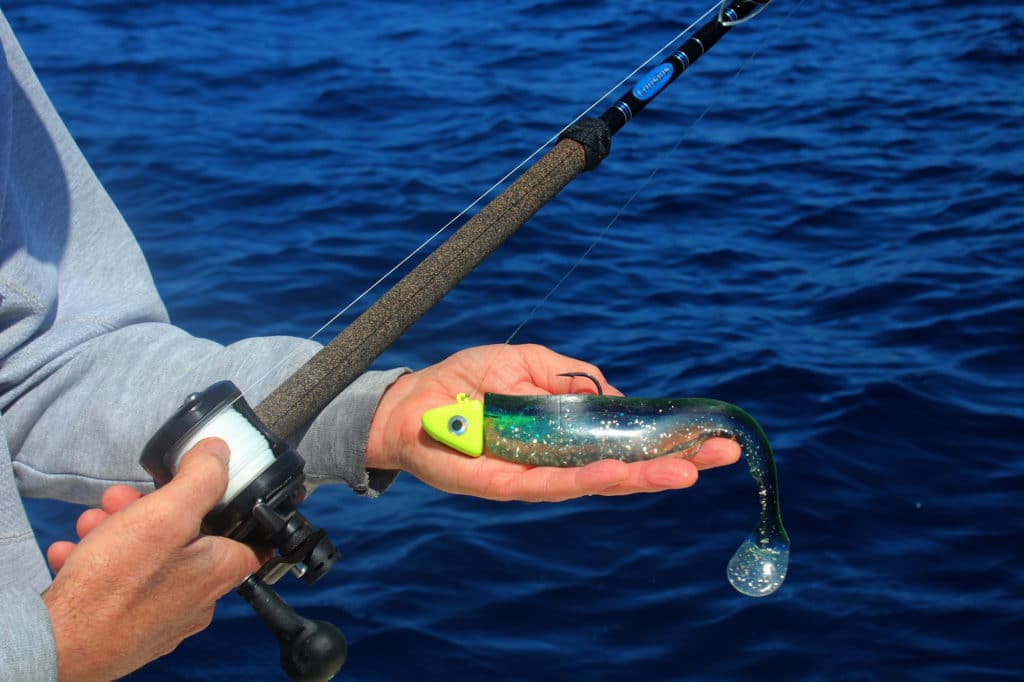
Chucking the Rubber
Working a lure that must be retrieved can be a challenge when fishing craggy, rocky structure in waters up to 300 feet deep. Swim the lure as close to the bottom as possible for as long as possible. Partyboat anglers should stay clear of other anglers fishing bait rigs straight up and down.
The technique involves casting your lure from the bow or downwind corner of the stern. Toss it as far as possible and let it sink quickly to the bottom, then work the swimbait with a steady, medium-speed retrieve for about 15 to 20 turns of the reel handle. If you don’t get bit, freespool back to the bottom and repeat. As the boat drifts over and eventually away from your line, you will have to recast and begin the process again.
If the boat drifts too quickly, you might have to use a more vertical presentation. In those situations, I just wind quickly for about seven to 10 cranks, drop back and repeat. It takes some dedication to do this, but the reward is worth the effort.
At times, however, conditions just won’t allow for working a swimbait. When this happens, I switch to my second-favorite lingcod lure, which is a heavy metal jig. Fish these lures vertically and bounce them just off the bottom.
To create a large target worthy of attracting the attention of big lingcod, I replace the usual treble hooks with a large single siwash hook, onto which I thread a 6-inch plastic or Berkeley Gulp! grub.

Just Keep Grinding
New anglers trying to master the swimbait method must resist the natural impulse to set the hook. Lingcod often grab the lure by the tail and hold on, and if you swing the rod, you pull the lure out of its mouth (often ripping the tail off in the process). Instead, just keep turning the reel handle at the same speed until the rod loads up and the fish is solidly hooked.
If the fish lets go or comes off after a few head shakes, immediately drop the lure down a few seconds and start reeling. Lingcod hate to let any meal—even a fake one—get away. I can’t tell you how many times I’ve sealed the deal after two or three re-bites.
Lings are also very competitive, and it’s not uncommon to have one or more free-swimming lingcod accompany a hooked fish on its way to the surface, ready to pounce on the lure should it become dislodged.
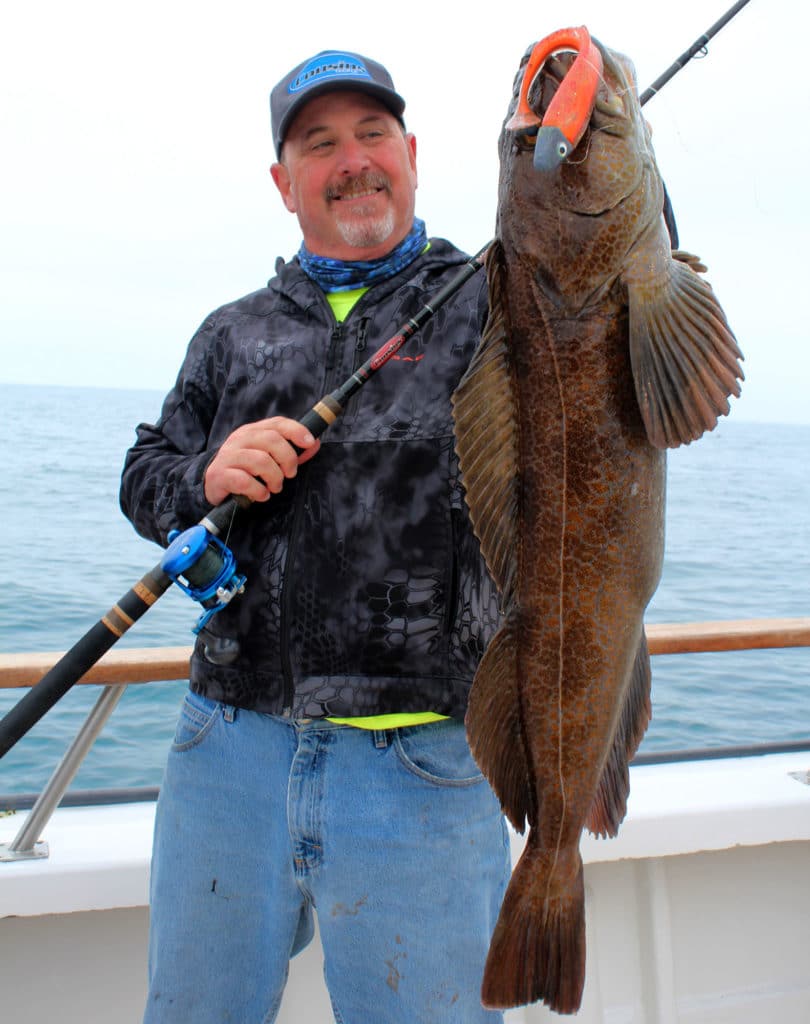
Trap Hook
To increase the number of solid hookups, I often rig my swimbaits with a simple trap-hook system. I loop an Owner 5/0 Assist Hook over the tip of the main hook and cinch it tight at the hook’s bend. Depending on the length of the swimbait, this provides a large trailing hook near the tail of the lure. I’ve caught plenty of big lingcod on the trap hook alone.
Maintain a slow and steady retrieve when fighting a big ling. They usually make a strong run toward structure once hooked, and after that, it’s usually heavy weight with just enough head shaking to rattle your nerves. If you keep steady pressure, lings usually stay fairly calm until they get near the boat.
Read Next: SoCal Lingcod Primer
Swimbait tails come in a wide variety of colors, and I’ve seen them all work. Shades of red and brown certainly match the natural coloration of juvenile rockfish.
Capt. Mike Nickerson of the popular Channel Islands-based sport boat Pacific Dawn likes a custom-poured tail he calls Blue Bass, the common name for the ubiquitous blue rockfish that populate these reefs. At the same time, I’ve caught plenty on gaudy colors like glow in the dark, chartreuse, pink-and-white striped and pearl white. I don’t think color is all that important as long as you work the lure effectively in the strike zone and maximize bites when they happen.
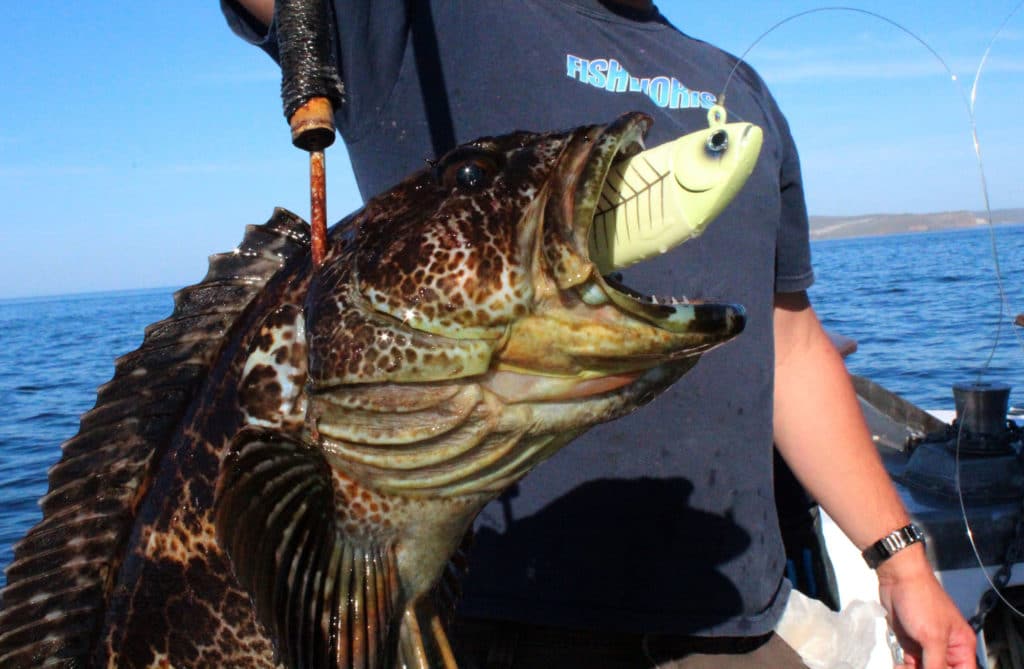
Tackling the Technique
It takes a specific style of rod and reel to effectively fish these heavy lures. Relatively stiff, fast-action graphite-composite jig rods of 8 to 8 1/2 feet work best for lobbing lures that might weigh up to a pound. Conventional reels can be either star or lever drag, as long as they hold 300 to 400 yards of 65-pound braided line.
Using straight braid with only a few feet of 40-pound test monofilament or fluorocarbon leader allows lures to sink quickly and keep you in direct touch with the lure and your fish. The short length of leader (joined with a back-to-back uni-knot) provides some added shock absorption and makes it easier to break off if you snag the bottom.








